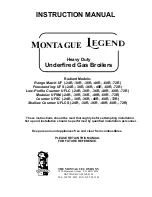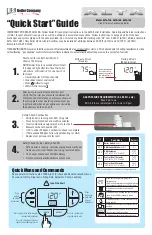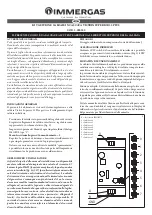
Pre-Installation
Greenstar Utility
ErP -
6 720 821 751 (2018/04)
19
KEY TO ILLUSTRATION
1.
1500mm vertically between terminals and the same wall.
2.
1000mm below eaves, gutters, pipes and drains. External flue
joints must be sealed with suitable silicon sealant.
3.
1,500mm measured horizontally between a vertical flue terminal
and a window, dormer window or opening.
4.
1,200mm between terminals facing each other.
5.
Vertical flue clearance, 300mm adjacent to a boundary line unless
it will cause a nuisance. BS 5410: Part 1 2014 recommends that
care is taken when siting terminal in relation to boundary lines.
6.
2500mm to a boundary line, unless it will cause a nuisance. It is
recommended that care is taken when siting terminal in relation to
boundary lines.
7.
300mm minimum clearance from a non-opening skylight to a
vertical flue.
8.
Vertical flue clearance, 750mm to non-combustible building
material, and 1,500mm clearance to combustible building
material.
9.
1000mm above, below and either side of an opening door, air vent
or opening window. These clearances are required by BS 5410-
Part 1:2014 to reduce a possible pluming nuisance, this could be
reduced to 600mm if there was no pluming nuisance, seek
guidance from the local authority building control.
10. 600mm diagonally to an opening door, air vent or opening
window.
11. 300mm to an internal or external corner.
12. 1000mm below a Velux window for a vertical flue300mm above or
to either side of the Velux window. The terminal must be at least
1000mm from the Velux when measured horizontally.
13. The flue must extend at least 600 mm above the roof and 400mm
horizontally from a pitched roof or 500mm in regions with heavy
snow fall.
14. 1500mm clearance to any vertical structure on a roof or open flue,
or 1,000 to a room sealed flue.
15. 1000mm below eaves and gutters and sanitary pipe and 300mm
from vertical sanitary pipes and drains.
16. Flue clearance must be at least 300mm from the ground. Terminal
guards must be fitted if the flue is less than 2 metres from the
ground or if a person could come into contact with the flue
terminal.
17. 2500mm to a surface facing a terminal, unless it will cause a
nuisance. This could be reduced if there was no pluming nuisance,
seek guidance from the local authority building control
18. Terminals must be at least 1800mm from an oil storage tank
unless a wall with of at least 30 minutes fire resistance and
extending 300mm wider and higher than the tank is between the
tank and the terminal.
19. For the purpose of determining suitable flue terminal positions for
the appliances, the boundary can be considered to extend to the
centre line of any adjacent routes or waterways e.g. paths, streets,
rights of way, canals, rivers or railways.
4.9
Conventional flue
• Open (conventional) flued appliances must not be installed in a
bedroom, bathroom or bed-sitting room.
• The flue system must be in accordance with BS 5410: Part 1 and 2
and the current Building Regulations.
• The flue must be constructed of materials suitable for use with
condensing combustion products.
• External flue systems must be of the insulated type.
• Brick and masonry chimneys must be lined with a suitable non -
combustible material and properly jointed to withstand the effects of
the working temperature (minimum rating of material 120°C) of the
appliance and any condensate which may form.
• All flue joints must be sealed to prevent the leakage of condensate
and combustion products.
• Ensure that joints are made so that the condensate runs away and is
not collected within the joint.
4.9.1
Flue adapters
Fig. 23 Conventional Flue adapter information
4.9.2
CF sizing
32/50 & 50/70 = 130mm Ø
• Because the flue operates at a lower temperature on a condensing
appliance compared to that of a conventional appliance, the flue
draught will be lower.
Typically the draught will be between 0.5mmwg and 4.4mmwg,
measured with the flue warm but the burner not firing. The actual
figure will vary depending on weather conditions, flue height and
position.
• The flue should be vertical and contain as few bends as possible, a
maximum of two 135° bends should be used.
• The flue outlet must be extended beyond the eaves of the building
and where possible, above the apex.
• Fit a suitable anti down-draught terminal where down draughts are
experienced.
NOTICE:
▶ Installations in car ports are not recommended.
▶ Dimensions from a flue terminal to a fanned air inlet
to be determined by the ventilation equipment
manufacturer.
▶ A flue terminal guard should be fitted over a terminal,
if persons could come into contact with the terminal,
or it could be subject to damage and where the
terminal is less than 2m from the finished floor level.
The flue can be increased in size from the appliance take
off point providing the joint is correctly sealed.
Never reduce the flue diameter from the appliance take
off point.
All measurements in millimetres
600
130mm
Conventional Flue Adaptor
Part No. 7-713-600-211
100mm ø
130mm ø
6720821751-38.1W
o
















































